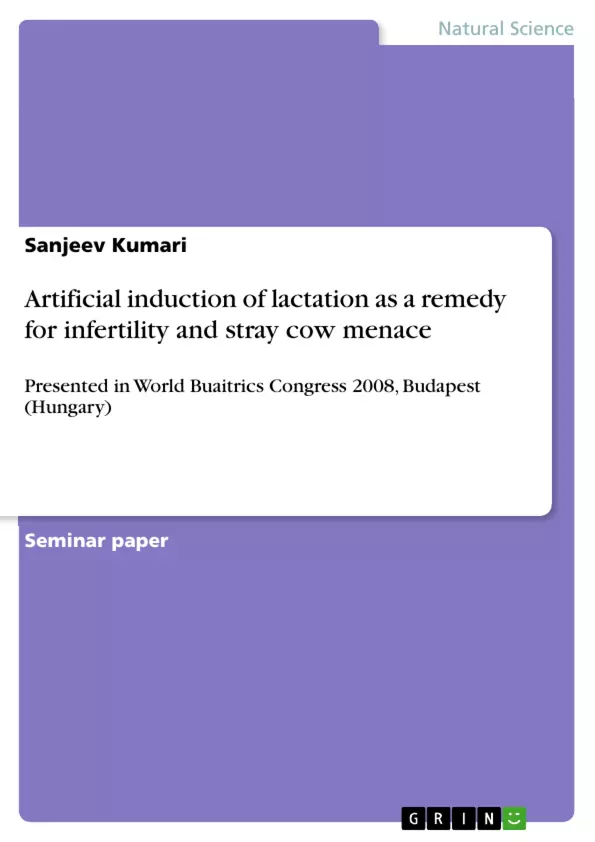In India stray cow menace is increasing day by day. Farmers do not want to keep the cows that become repeat breeders and cease giving milk. Induced lactation of non-pregnant cows may be a management alternative to reduce culling and increase profits (Magliaro et al., 2004). As cow slaughter and their use for meat purpose is not an option in India, the non-lactating repeat breeder cows are finally left stray on the roads. These stray animals again pose many kind of risks to the people in the form of accidents, zoonoses etc. The present clinical effort was hypothesized at inducing artificial lactation in such animals on one hand and treating infertility by the means of priming the reproductive tract with estrogen and progesterone on the other hand. The effort was also aimed at rehabilitating stray cows to reduce stray cow menace.
Inhaltsverzeichnis (Table of Contents)
- Introduction
- Materials and Methods
- Group No. 1
- Group No. 2
- Group No. 3
- Results and Discussion
- Conclusion
Zielsetzung und Themenschwerpunkte (Objectives and Key Themes)
This study aimed to explore the feasibility of artificially inducing lactation in non-pregnant cows as a solution to the increasing stray cow menace in India. The study investigated the effectiveness of a hormonal treatment protocol on both repeat breeder cows with reproductive disorders and stray cows.
- Artificial induction of lactation in non-pregnant cows
- Addressing the stray cow menace in India
- Improving reproductive health of repeat breeder cows
- Evaluating the economic viability of induced lactation
- Exploring the efficacy of hormonal therapy in bovine reproduction
Zusammenfassung der Kapitel (Chapter Summaries)
The introduction highlights the growing problem of stray cows in India and proposes artificial lactation as a potential solution. It describes the rationale behind the study and its objective to reduce culling and increase profits. The Materials and Methods section details the selection of 30 cows, divided into three groups based on their reproductive status, and the treatment protocol involving a combination of estrogen, progesterone, and dexamethasone. The Results and Discussion section presents the success rates of lactation induction and conception in each group, along with the milk yield achieved. The study also highlights the economic benefits of inducing lactation and discusses the use of hormonal therapy in bovine reproduction.
Schlüsselwörter (Keywords)
This study focuses on key areas like artificial induction of lactation, stray cow management, repeat breeder cows, reproductive disorders, hormonal therapy, bovine reproduction, and economic viability.
- Quote paper
- Dr. Sanjeev Kumari (Author), 2008, Artificial induction of lactation as a remedy for infertility and stray cow menace, Munich, GRIN Verlag, https://www.hausarbeiten.de/document/118419


